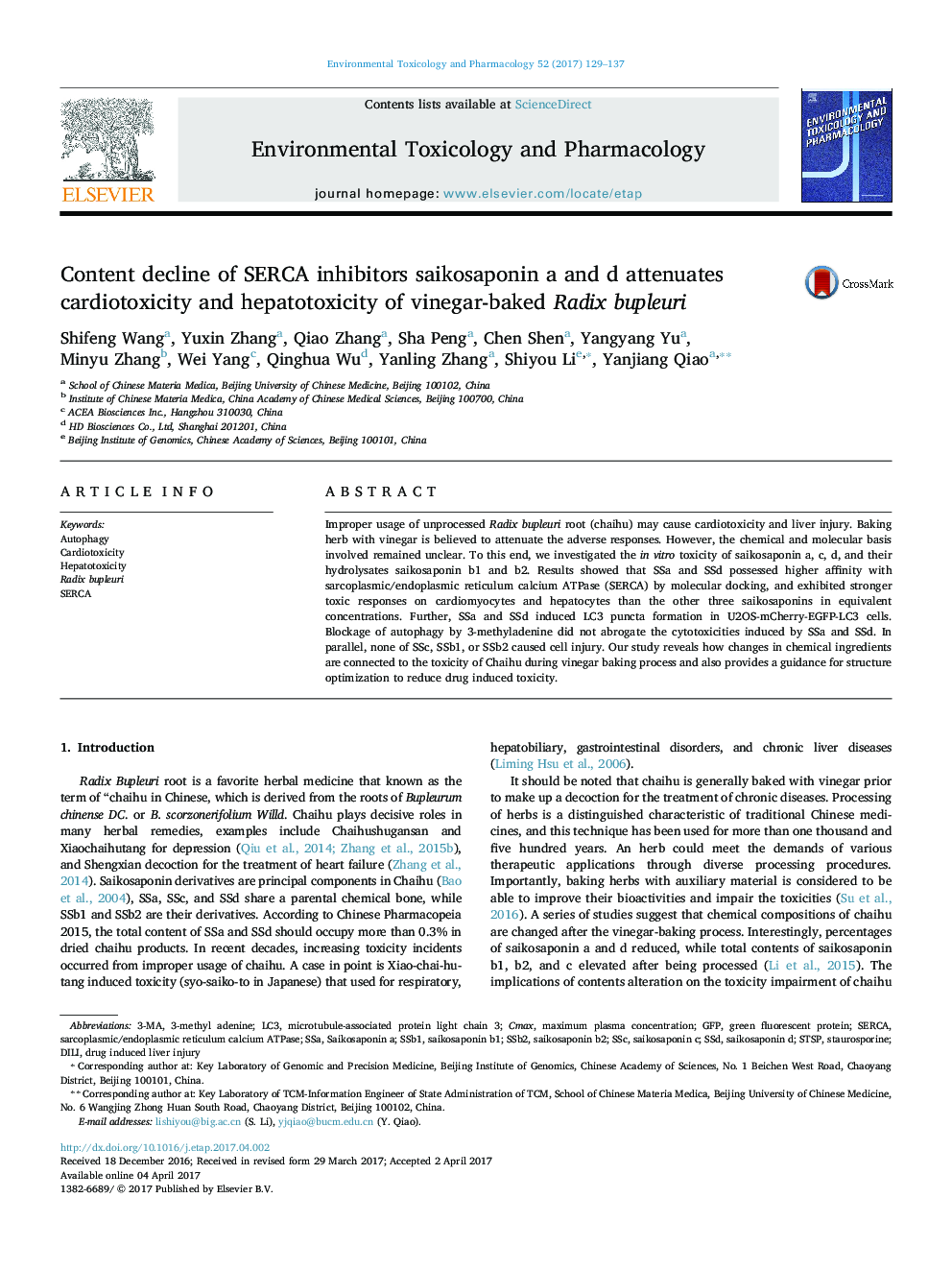| Article ID | Journal | Published Year | Pages | File Type |
|---|---|---|---|---|
| 5559674 | Environmental Toxicology and Pharmacology | 2017 | 9 Pages |
â¢Saikosaponin a and d are major toxic ingredients in Radix bupleuri.â¢Saikosaponin a and d are SERCA inhibitors and induce cardiotoxicity.â¢Blockage of autophagy augments HepG2 apoptosis induced by saikosaponin a and d.â¢The hydrolysates saikosaponin b1, b2, and c are absent of cardiotoxicity and hepatotoxicity.
Improper usage of unprocessed Radix bupleuri root (chaihu) may cause cardiotoxicity and liver injury. Baking herb with vinegar is believed to attenuate the adverse responses. However, the chemical and molecular basis involved remained unclear. To this end, we investigated the in vitro toxicity of saikosaponin a, c, d, and their hydrolysates saikosaponin b1 and b2. Results showed that SSa and SSd possessed higher affinity with sarcoplasmic/endoplasmic reticulum calcium ATPase (SERCA) by molecular docking, and exhibited stronger toxic responses on cardiomyocytes and hepatocytes than the other three saikosaponins in equivalent concentrations. Further, SSa and SSd induced LC3 puncta formation in U2OS-mCherry-EGFP-LC3 cells. Blockage of autophagy by 3-methyladenine did not abrogate the cytotoxicities induced by SSa and SSd. In parallel, none of SSc, SSb1, or SSb2 caused cell injury. Our study reveals how changes in chemical ingredients are connected to the toxicity of Chaihu during vinegar baking process and also provides a guidance for structure optimization to reduce drug induced toxicity.
Graphical abstractDownload high-res image (158KB)Download full-size image
